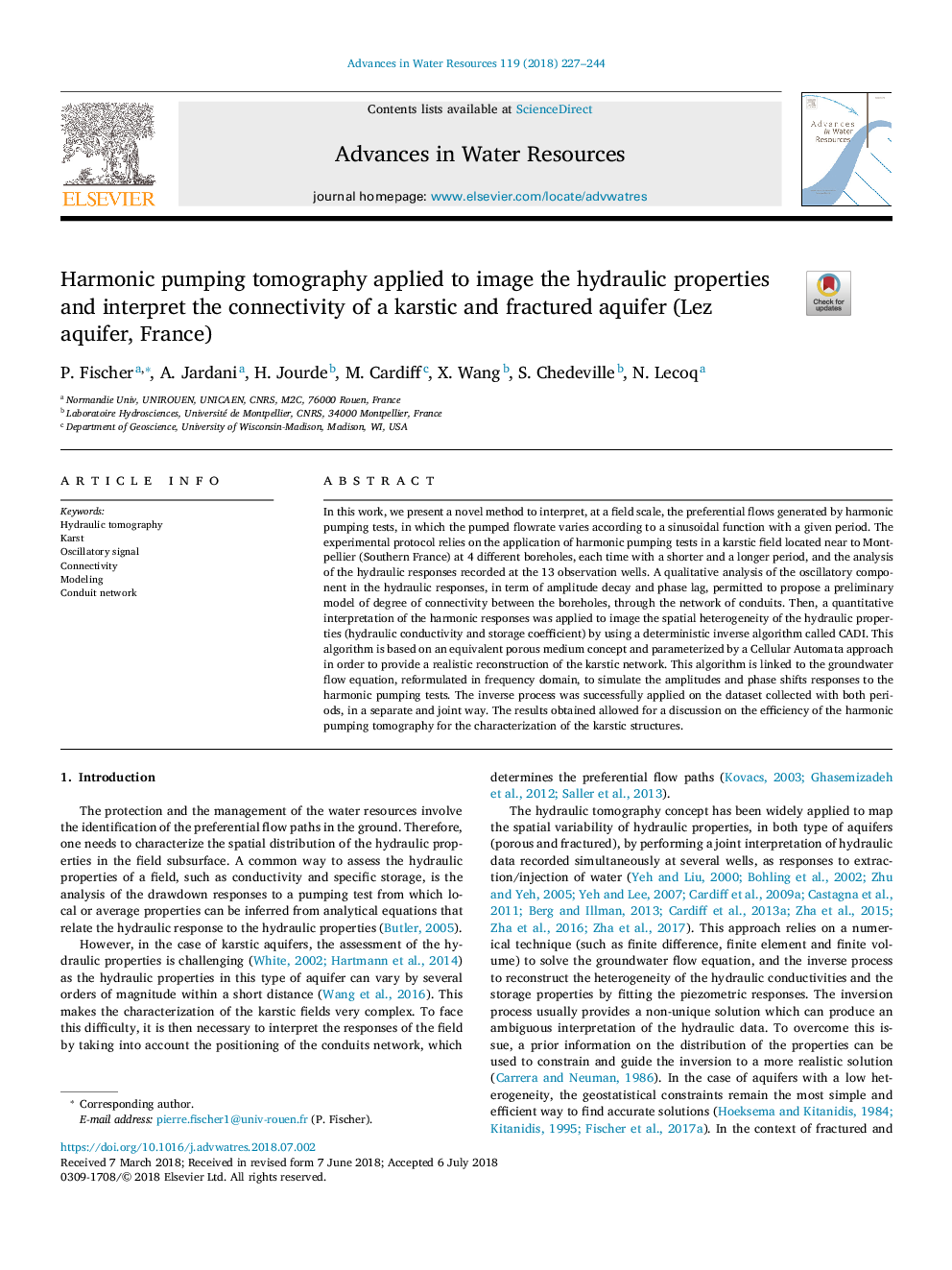| Article ID | Journal | Published Year | Pages | File Type |
|---|---|---|---|---|
| 8883259 | Advances in Water Resources | 2018 | 18 Pages |
Abstract
In this work, we present a novel method to interpret, at a field scale, the preferential flows generated by harmonic pumping tests, in which the pumped flowrate varies according to a sinusoidal function with a given period. The experimental protocol relies on the application of harmonic pumping tests in a karstic field located near to Montpellier (Southern France) at 4 different boreholes, each time with a shorter and a longer period, and the analysis of the hydraulic responses recorded at the 13 observation wells. A qualitative analysis of the oscillatory component in the hydraulic responses, in term of amplitude decay and phase lag, permitted to propose a preliminary model of degree of connectivity between the boreholes, through the network of conduits. Then, a quantitative interpretation of the harmonic responses was applied to image the spatial heterogeneity of the hydraulic properties (hydraulic conductivity and storage coefficient) by using a deterministic inverse algorithm called CADI. This algorithm is based on an equivalent porous medium concept and parameterized by a Cellular Automata approach in order to provide a realistic reconstruction of the karstic network. This algorithm is linked to the groundwater flow equation, reformulated in frequency domain, to simulate the amplitudes and phase shifts responses to the harmonic pumping tests. The inverse process was successfully applied on the dataset collected with both periods, in a separate and joint way. The results obtained allowed for a discussion on the efficiency of the harmonic pumping tomography for the characterization of the karstic structures.
Related Topics
Physical Sciences and Engineering
Earth and Planetary Sciences
Earth-Surface Processes
Authors
P. Fischer, A. Jardani, H. Jourde, M. Cardiff, X. Wang, S. Chedeville, N. Lecoq,
